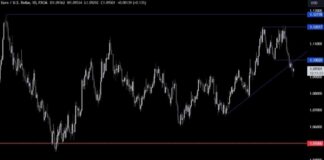Investing in Costly Stocks: Is It Worth It?
Stock splits are often seen as a routine administrative exercise that doesn’t really impact the overall value of a company. However, for companies like Nvidia, these events hold special significance for both the company and its investors. On June 7th, each share in Nvidia is set to become many, with each share splitting into ten. This marks a significant increase in the share price, prompting the need for a split in the first place.
The decision to split shares is usually made when the share price has multiplied, commonly by two or three, making it more difficult for smaller investors to participate in the market. By splitting the shares, the price is reduced to a more manageable level, typically around $100, making it easier for investors to buy and sell. This move is often celebrated by long-time backers of the company, as it signifies a period of growth and success.
In the past, companies like Alphabet and Amazon have also undergone similar stock splits, with each of their shares splitting into 20. This trend has been particularly prevalent in the big tech sector, where companies have seen significant growth in their share prices over the years. Investors in these companies have reaped the rewards of these splits, as they have had more opportunities to capitalize on the increased value of their shares.
The decision to invest in costly stocks like Nvidia can be a daunting one, especially for smaller investors who may be wary of the high share price. However, the potential rewards of investing in these companies can outweigh the initial cost. By investing in companies with strong growth potential and a track record of success, investors can see significant returns on their investment over time.
Understanding the Benefits of Investing in Costly Stocks
Investing in costly stocks like Nvidia can offer a range of benefits for investors. One of the key advantages is the potential for significant returns on investment. Companies with high share prices often have strong growth prospects and a solid financial performance, making them attractive options for investors looking to grow their wealth.
In addition, investing in costly stocks can provide diversification for a portfolio. By including high-value stocks in a portfolio, investors can spread their risk across different asset classes and industries, reducing the impact of market fluctuations on their overall investment strategy.
Furthermore, investing in costly stocks can offer opportunities for long-term growth and capital appreciation. Companies like Nvidia have a history of delivering strong returns for investors, making them attractive options for those looking to build wealth over time.
Considerations for Investing in Costly Stocks
While investing in costly stocks can offer a range of benefits, there are also some considerations to keep in mind. One of the key factors to consider is the volatility of the stock market. High-value stocks like Nvidia can be subject to significant price fluctuations, which can impact the value of an investor’s portfolio.
Additionally, investing in costly stocks requires a long-term perspective. While these stocks may offer the potential for high returns, they also come with a higher level of risk. Investors should be prepared to weather market fluctuations and hold onto their investments for an extended period to maximize their potential returns.
It’s also important to consider the valuation of a company before investing in its stock. High share prices may not always be indicative of a company’s true value, so investors should conduct thorough research and due diligence before making any investment decisions.
Strategies for Investing in Costly Stocks
When it comes to investing in costly stocks like Nvidia, there are a few strategies that investors can employ to maximize their returns. One strategy is dollar-cost averaging, which involves investing a fixed amount of money in a stock at regular intervals. This approach can help investors mitigate the impact of market volatility and build a position in a high-value stock over time.
Another strategy is to diversify across different asset classes and industries to reduce risk and maximize returns. By spreading investments across a range of high-value stocks, bonds, and other assets, investors can create a well-balanced portfolio that is better equipped to withstand market fluctuations.
Finally, it’s important for investors to stay informed about market trends and company performance when investing in costly stocks. By keeping up-to-date on news and developments in the market, investors can make informed decisions about when to buy, sell, or hold onto their investments.
In conclusion, investing in costly stocks like Nvidia can offer significant benefits for investors who are willing to take on the risk. By understanding the potential rewards and risks associated with these investments, investors can make informed decisions that align with their financial goals and risk tolerance.

















